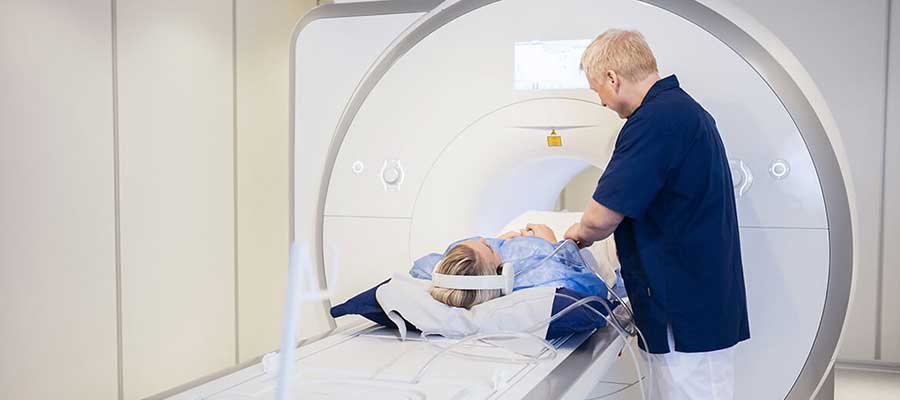MRI Technologist Salaries (2025 Guide): Pay, Top Settings & How to Earn More
If you’re exploring a career in MRI—or already working at the scanner—this up-to-date salary guide shows what MRI technologists earn nationwide, what drives higher pay, and the practical steps that move you into the top bracket. We use the latest federal wage data and respected job-market sources, so you’re not guessing.
Salary at a glance (U.S.)
-
National median (MRI Technologists): $88,180 (May 2024).
-
10th–90th percentile: ~$64,910–$121,420.
-
Highest-paying settings (median): Outpatient care centers lead the field. Bureau of Labor Statistics
MRI pay vs. X-ray (quick compare)
MRI technologists out-earn general radiologic (X-ray) technologists on median pay. In 2024, radiologic technologists earned $77,660 median—about $10k less than MRI. Bureau of Labor Statistics
What MRI technologists earn (and where)
National picture. The median annual wage is $88,180 for MRI technologists, with experienced techs and leads commonly earning into six figures, especially in busy metro markets and premium settings. Outpatient care centers show the strongest median pay among major employer types, followed by hospitals, medical/diagnostic labs, and physician offices. Bureau of Labor Statistics
Travel & contract roles. Travel MRI rates change with demand, but current job-board data often shows averages around the mid-$40s per hour, with spikes above that during shortages or in high-cost metros. (These are market estimates from active postings, not federal medians.) Vivian Health
The 6 biggest levers that raise MRI pay
-
Setting (where you work). Outpatient centers typically pay more than hospitals because of throughput, schedule demands, and revenue mix. Bureau of Labor Statistics
-
Location (state/metro). High-cost metros and shortage areas bid up wages. Public data varies; job-board aggregators publish state leaderboards and weekly pay snapshots you can monitor for moves. ZipRecruiter+1
-
Experience & case mix. Complex neuro/spine, trauma, and cardiac MRI experience can justify higher tiers.
-
Credentials. ARRT (MRI) and ARMRIT credentials signal competence and are preferred/required by many employers and accrediting bodies. More credentials (e.g., CT) can increase your value. ARRT+2ARRT+2
-
Shifts & differentials. Evenings, nights, weekends, holidays, and on-call usually add differentials; PRN or per-diem can pay more per hour.
-
Mobility & travel. Willingness to relocate or accept travel contracts is the fastest way to hit the higher ranges in tight markets. Vivian Health
How to increase your MRI salary (action plan)
-
Earn/stack credentials. If you’re new to imaging, pursue the ARRT primary pathway (associate degree + accredited program + exam). If you’re already an R.T., use the postprimary pathway to add MRI. ARMRIT is a dedicated MRI credential recognized by multiple bodies and some state boards. armrit.org+3ARRT+3ARRT+3
-
Target the right settings. Apply to outpatient centers or high-acuity service lines where pay bands are stronger. Bureau of Labor Statistics
-
Add high-value skills. Advance into cardiac MRI, neuro, or interventional-adjacent workflows; preceptor/lead duties also bump comp.
-
Leverage shifts/differentials. Negotiate base + differentials; some teams pay premiums for cross-coverage or hard-to-fill shifts.
-
Consider travel/PRN. Keep an eye on national averages and contracts to opportunistically jump when rates rise. Vivian Health
Job outlook (why the long-term trend supports higher wages)
MRI technologist employment is projected to grow +7% (2024–2034)—faster than average—driven by an aging population, chronic disease prevalence, and expanding use of MRI in diagnosis and treatment planning. Combined radiologic/MRI technologist employment is projected at +5% over the same period. Bureau of Labor Statistics
FAQs
Do MRI technologists make more than X-ray techs?
Yes. Latest federal data shows MRI median $88,180 vs. radiologic technologists $77,660. Bureau of Labor Statistics
Where do MRI technologists get paid the most?
It changes with local demand. Job-board data (based on active postings, not BLS medians) often lists top-paying states and weekly pay snapshots; use these to time moves or travel assignments. ZipRecruiter+1
Which employer type pays best?
Outpatient care centers typically lead on median pay for MRI technologists. Bureau of Labor Statistics
Which certifications help me earn more?
ARRT (MRI) and ARMRIT are widely recognized; many employers prefer or require them. If you’re already certified in another modality (e.g., Radiography), add MRI via the ARRT postprimary pathway. ARRT+1
How Pulse Radiology Institute fits
If you want to move into higher-pay roles faster, a structured MRI program with robust clinical hours and exam preparation shortens the path. Pulse Radiology Institute offers an “ARMRIT-accredited“ Associate of Science in MRI Technology with national clinical placement and exam prep.





